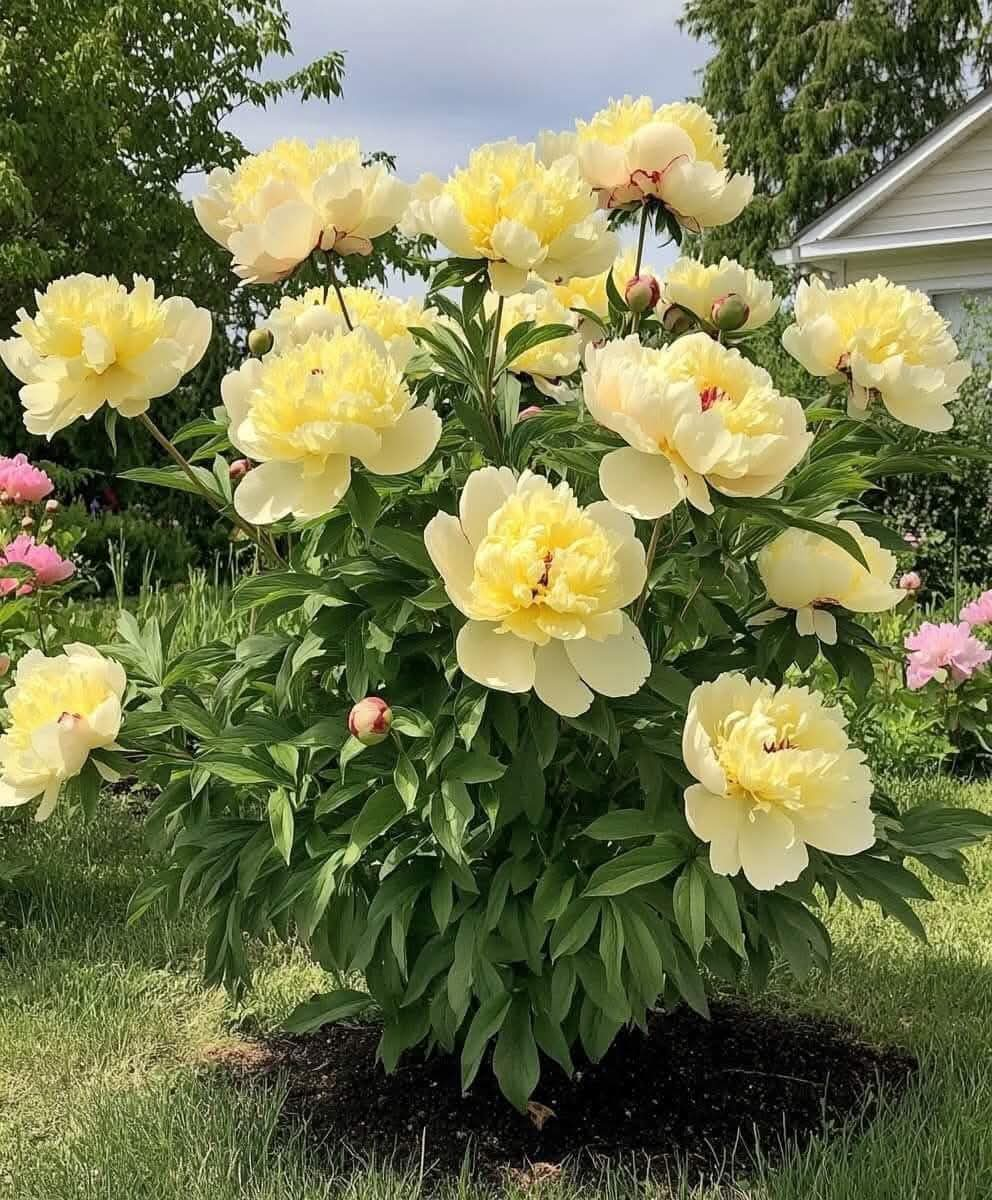Peonies are a gardener’s dream, offering stunning, fragrant blooms, low maintenance, and long-lasting beauty. These beloved perennials have adorned gardens for centuries, symbolizing romance, prosperity, and good fortune. Whether you’re planting them for their breathtaking floral displays or their hardy, easy-care nature, peonies are a must-have for any garden.
In this guide, you’ll learn why peonies deserve a place in your landscape and how to successfully grow and care for them.
Why You Should Have Peonies
🌺 1. Spectacular Blooms
Peonies are known for their large, showy flowers that come in a variety of colors, including pink, red, white, and coral. Many varieties are highly fragrant, making them a gorgeous addition to flower beds and cut arrangements.
🌿 2. Longevity
Unlike many short-lived perennials, peonies can thrive for decades, often outliving the gardener who plants them. Once established, they return year after year, making them a valuable long-term investment.
💪 3. Low Maintenance
Peonies require minimal care once planted in the right conditions. They are hardy, disease-resistant, and rarely bothered by pests.
⏳ 4. Seasonal Beauty
Peonies bloom in late spring to early summer, providing a burst of color and fragrance when many other plants are still emerging.
🏡 5. Versatility
Peonies can be planted in borders, flower beds, mixed garden designs, or as stunning focal points. They pair well with roses, irises, and hydrangeas, creating a romantic and lush display.
How to Grow Peonies
📍 Choosing the Right Spot
Light: Peonies thrive in full sun, needing at least 6 hours of direct sunlight daily. Partial shade is tolerated but may result in fewer blooms.
Soil: These perennials prefer rich, well-draining soil with organic matter. Avoid heavy clay or overly sandy soils, which can stunt growth.
🌱 Planting Peonies
Timing: The best time to plant peonies is fall (September-November) or early spring to allow roots to establish.
Method:
Dig a hole twice as wide and deep as the root ball.
Place the peony root with eyes (buds) 1-2 inches below the soil surface.
Backfill with soil, firm gently, and water thoroughly.
💧 Watering Peonies
Frequency: Keep soil evenly moist but not waterlogged.
Best Method: Water at the base of the plant to prevent fungal issues on the leaves.
🌿 Fertilizing Peonies
Best Type: Use a balanced, slow-release fertilizer or one formulated for flowering plants.
Application:
Apply in early spring when new growth appears.
Feed again after blooming if necessary, but avoid high-nitrogen fertilizers, which promote leaf growth over flowers.
✂️ Pruning & Maintenance
Deadheading: Remove spent blooms to encourage stronger growth and air circulation.
Fall Cleanup: After the first frost, cut back stems to ground level to prevent disease spread.
📌 Supporting Peonies
Staking: Some peony varieties produce heavy blooms that may need support.
Best Method: Use hoop stakes or cages early in the season before flowers bloom.
🌾 Mulching Peonies
Why Mulch? Mulching retains moisture, suppresses weeds, and regulates soil temperature.
Best Mulch Types: Organic options like shredded bark, compost, or straw.
Placement Tip: Keep mulch a few inches away from the plant’s base to prevent rot.
🐞 Common Pests & Diseases
Ants: Attracted to peony buds but harmless—no need to remove them.
Botrytis Blight & Powdery Mildew: Caused by poor air circulation and overwatering.
Prevention:
Ensure good spacing between plants.
Avoid overhead watering.
Use a fungicide if needed.
How to Propagate Peonies
🌱 Division Method
Peonies are best propagated by division, ensuring healthy and productive new plants.
When to Divide: Fall (after dormancy begins) is the ideal time.
How to Divide:
Carefully dig up the root ball.
Cut into sections, ensuring each division has 3-5 “eyes” (buds).
Replant following the original planting instructions.
Best Peony Varieties to Grow
🌸 Herbaceous Peonies (Most common, die back in winter)
Sarah Bernhardt: Large, soft pink double blooms, highly fragrant.
Karl Rosenfield: Bold red blooms with striking presence.
Festiva Maxima: White petals with red streaks, highly fragrant.
🌿 Tree Peonies (Woody stems, larger flowers)
Hana-Kisoi: Stunning pink blooms with delicate ruffles.
Renkaku: Pure white flowers, graceful and elegant.
🌾 Itoh Peonies (Hybrid of tree and herbaceous peonies)
Bartzella: Yellow blooms, long-lasting flowers.
Cora Louise: White petals with lavender-pink centers.
Final Thoughts
Peonies are timeless, stunning, and easy to care for, making them one of the best perennials for any garden. With proper planting, care, and occasional maintenance, they will reward you with spectacular blooms for decades.
Are you growing peonies? Share your experience and favorite varieties in the comments! 🌿🌸
More Articles You Might Like
-
Texas Toast Sloppy Joes: The Crunchy, Cheesy Upgrade You Didn’t Know You Needed
There’s something timeless about sloppy joes. For generations, this saucy, savory, and slightly sweet ground beef sandwich has been a go-to comfort food in American kitchens. It’s quick, filling, and family-friendly—perfect for busy weeknights. But what if we told you there’s a way to take this classic dish up a notch? Enter the Texas Toast…
-
Classic Pig Pickin’ Cake
When it comes to Southern desserts, few sweets shine as brightly as the Classic Pig Pickin’ Cake. This nostalgic cake, sometimes called a “Mandarin Orange Cake,” has roots deep in Southern tradition. It gets its playful name from its frequent appearance at pig pickin’s—Southern-style barbecue gatherings where communities come together to enjoy slow-cooked pork, sides,…
-
Lemon Garlic Butter Chicken with Creamy Parmesan Pasta
There’s something irresistible about the combination of tender, golden-browned chicken paired with a creamy pasta coated in Parmesan cheese. Add the brightness of lemon, the depth of garlic, and the richness of butter, and you have a recipe that feels indulgent yet approachable enough for a weeknight dinner. Lemon Garlic Butter Chicken with Creamy Parmesan…



